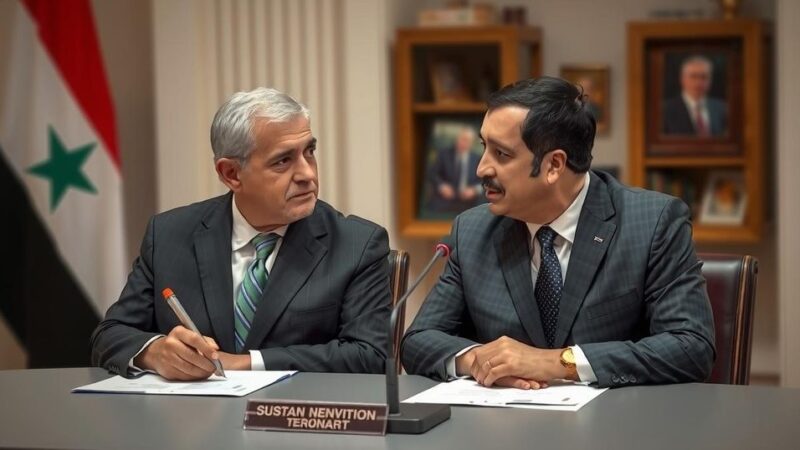U.S. officials are actively pursuing efforts to stabilize the Middle East amidst escalating tensions between Israel and Hezbollah, coupled with a humanitarian crisis in Gaza where aid shipments have severely declined. Recent Israeli airstrikes have resulted in considerable casualties, raising international alarm, as Iran signals potential retaliation before the U.S. elections. The situation is further complicated by Israel’s legislation affecting UN humanitarian efforts in the region.
The situation in the Middle East remains tense as U.S. officials engage in renewed discussions to mitigate the ongoing conflicts in Gaza and Lebanon, and to preempt a potential Iranian retaliation to recent Israeli strikes. The Lebanese Prime Minister has expressed optimism regarding the possibility of achieving a ceasefire between Israel and Hezbollah in the imminent future, indicating that discussions are in progress. In the wake of intense Israeli airstrikes, including an attack in Baalbek, casualties have significantly increased; reports indicate that over 90 individuals were killed, among them numerous children, prompting international condemnation. Moreover, humanitarian conditions within Gaza have continued to deteriorate, with aid deliveries reaching alarming lows. Recent UN data indicates that merely 836 aid trucks entered Gaza in October, starkly contrasting with the pre-war average of 500 trucks daily. The humanitarian crisis is exacerbated by continuous bombardment, with the sole operational hospital in northern Gaza severely damaged, rendering it incapable of providing adequate care to the thousands injured. The latter part of this report highlights the Iranian perspective, wherein a senior source suggested Tehran may execute a decisive response to Israeli actions prior to the upcoming U.S. presidential election. The White House has urged Iran against any retaliatory actions, while reiterating its commitment to support Israel’s defense in this precarious circumstance. Significant diplomatic movements are also noted, with high-ranking U.S. officials visiting key locations, suggesting a push towards stabilizing the region amidst escalating tensions. However, the ongoing conflict, humanitarian crisis, and geopolitical dynamics, including an Israeli parliamentary vote to restrain UN aid efforts, demonstrate a complex interplay that continues to challenge peace and security in the region.
The ongoing conflicts involving Israel, Hezbollah, and Palestinian factions in Gaza have deep historical roots, often characterized by cycles of violence and ceasefire attempts. Recent hostilities escalated with severe Israeli airstrikes in Gaza, in response to perceived threats from militant groups. The humanitarian impact has been catastrophic, with aid organizations reporting unprecedented shortages and casualties among civilians. The U.N. agencies and international stakeholders continually press for immediate ceasefires and legal frameworks to ensure humanitarian access while navigating the geopolitical influences of countries like Iran. Recent dynamics have heightened concerns related to the U.S. electoral context, possibly influencing Tehran’s strategic calculations regarding its responses.
In conclusion, the current landscape of the Middle East is fraught with uncertainty and peril, as U.S. officials strive to mediate a ceasefire between Israel and Hezbollah amid an alarming humanitarian crisis in Gaza. Israeli military actions have resulted in substantial loss of life, igniting global outcry as aid into the region plummets. The Iranian government’s response looms as a crucial element to monitor, especially given the impending U.S. elections. The implications of these developments are profound, necessitating concerted international efforts to achieve peace and alleviate humanitarian suffering.
Original Source: www.cnn.com







